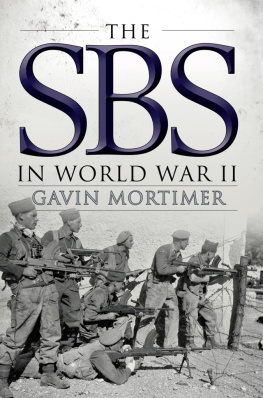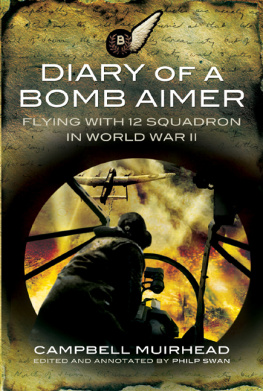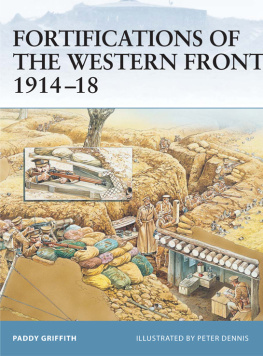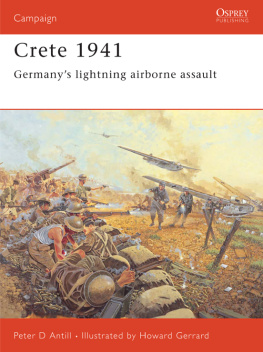
First published in Great Britain in 2013 by Osprey Publishing,
PO Box 883, Oxford, OX1 9PL, UK
1385 Broadway, 5th Floor, New York, NY 10018
E-mail:
Bloomsbury is a registered trademark of Bloomsbury Publishing Plc
This electronic edition was published in 2016 by Bloomsbury Publishing Plc
OSPREY PUBLISHING IS PART OF BLOOMSBURY PUBLISHING PLC
2013 Gavin Mortimer
All rights reserved
You may not copy, distribute, transmit, reproduce or otherwise make available this publication (or any part of it) in any form, or by any means (including without limitation electronic, digital, optical, mechanical, photocopying, printing, recording or otherwise), without the prior written permission of the publisher. Any person who does any unauthorised act in relation to this publication may be liable to criminal prosecution and civil claims for damages.
Every attempt has been made by the Publisher to secure the appropriate permissions for material reproduced in this book. If there has been any oversight we will be happy to rectify the situation and written submission should be made to the Publishers.
A CIP catalogue record for this book is available from the British Library
Gavin Mortimer has asserted his right under the Copyright, Designs and Patents Act, 1988, to be identified as the Author of this Work.
ISBN: 978-1-4728-1113-4
ePub ISBN: 978-1-4728-1115-8
PDF ISBN: 978-1-4728-1114-1
Front cover and title page image: Squadron patrol the streets of Greece in a clearly staged photo.
Osprey Publishing supports the Woodland Trust, the UKs leading woodland conservation charity. Between 2014 and 2018 our donations will be spent on their Centenary Woods project in the UK.
www.ospreypublishing.com
DEDICATION
For the men of the Alimnia Patrol, and for their mothers, who went to their graves without knowing the truth.
ACKNOWLEDGEMENTS
In researching a book such as this, the many hours that one spends in archives are made all the easier by the efficiency of the staff. In the case of this book I could not have wished for more amiable assistance. I am therefore indebted to all the staff at the National Archives in Kew; the London Metropolitan Archives; the Imperial War Museum; and the Wiener Library, a charming archive in Russell Square focusing on contemporary Jewish history. I am particularly grateful to all at the SAS Regimental Association who once again allowed me to rummage through their extensive archive.
Thank you to the Board of Deputies of British Jews for granting me permission to view the Report on British Servicemen captured in Greece in 1944 housed in the Metropolitan Archives, and I tip my hat once again to John Robertson, whose exhaustive research has resulted in the superb website www.specialforcesroh.com.
As ever Emily Holmes and all the team at Osprey have been accommodating and patient, indulging my whims and editing with precision. Thank you.
And thanks to the following publishers who gave me permission to quote from their titles: Going to the Wars by John Verney (Collins, 1955), Anders Lassens War by Thomas Harder (Informations Forlag, 2010), Anders Lassen by Mike Langley (New English, 1988), The Filibusters by John Lodwick (Metheun, 1947) and the Imperial War Museum Collections Department.
Although, regrettably, the number of veterans from World War II is a dwindling band, the relatives of combatants continue to honour the memory of those who served. In the writing of this book I received great help and support from Lynne Perrin (daughter of Duggie Pomford), Angie English and Raymond Duggan (daughter and son of John Duggan), Holly Kendrick (niece of George Evans), Paul Ogden (nephew of Tom Kitchingman), David Henry (grandson of Jack Emerton), Ian Layzell (son of Albert Layzell) and Jane Waterman (daughter of John Waterman).
Finally I would like to thank Dick Holmes, John Waterman and Reg Osborn for giving me so much of their time and delving so deep into their memory to relive events of so long ago. It was a privilege and I hope this book honours those who never returned.
INTRODUCTION
In September 1942 General McCreery, chief of staff to General Harold Alexander, Commander-in-Chief Middle East Command, wrote to his superior about a small special forces unit operating in North Africa. It had been a conspicuous success in the past, wrote McCreery, and its morale is high. He then added:
For a detailed account of this unit read Gavin Mortimer, The SAS in World War II (Osprey, 2015).
The personality of the present commander, L Detachment SAS [Special Air Service] Brigade, is such that he could be given command of the whole force with appropriate rank. In view of this I make the following suggestion. That L Detachment SAS Brigade, 1 SS [Special Service] Regiment, Special Boat Section should all be amalgamated under L Detachment SAS Brigade and commanded by Major D. Stirling with the rank of lieutenant-colonel.
Alexander accepted the recommendation and on 28 September 1942 General Headquarters Middle East Forces issued an order promoting the 26-year-old David Stirling and authorising him to expand his unit into a regiment.
Stirling envisaged the SAS regiment comprising five squadrons A, B, C, D and HQ and he set its war establishment at 29 officers and 572 other ranks. His most pressing challenge was to fill his nascent regiment with suitable soldiers, while assisting in the Eighth Armys imminent offensive against Axis forces at El Alamein. Stirling formed his most experienced men, the bulk of L Detachment, into A Squadron under the command of the formidable Blair Paddy Mayne, and instructed them to attack targets along the coast between Tobruk and the rear of the enemy front line. While A Squadron headed into the desert to harass the Germans, Stirling returned to the SAS base at Kabrit, 90 miles east of Cairo, to continue recruiting and to oversee the training of the new soldiers.
It was a confused period, both for the SAS then and for historians now, endeavouring to unravel the administrative knots that Stirling unintentionally tied through his abhorrence of paperwork. The only time Stirling committed anything to paper was shortly after the war when, in a brief typewritten history of the regiment now housed in the SAS archives, he listed the units under his command in January 1943, the month he was captured by the Germans:
a) 1st SAS Regiment. L Detachment had become the 1st SAS Regiment in October 1942. Its establishment consisted of five squadrons a total of about 50 officers and 450 OR [other ranks]. At the time of my capture the full strength had not yet been recruited. I had about 40 officers and 350 OR but was hoping to make the full strength from the Middle East Commando, which I had taken over and was sorting.
b) The French SAS Squadron. This unit had been considerably added [sic] and in January 1943 consisted of about 14 officers and 80 OR. I hoped that this unit would form the nucleus of a French SAS Regiment, which I reckoned would be able to carry out useful operations in France preceding and during the inevitable 2nd Front in Europe.
c) The Greek Sacred Squadron. I had taken over this unit towards the end of 1942 and had not finally completed their training at the time of my capture. My idea was to use the Greek Sacred Squadron for raiding operations in the Eastern Mediterranean, where their local knowledge would be of great value. The unit consisted of 14 officers and about 100 OR.
d) Folboat Section [Special Boat Section]. This unit had had a separate existence up until August 1942 and had carried out many brilliant operations. My intention was to absorb them into the 1st SAS Regiment as a squadron but I was in the meantime giving them the full SAS training, including a parachute course. They had about 15 officers and about 40 OR.
Next page

![Bull Peter - Staghound armored car, 1942-62 [electronic resource]](/uploads/posts/book/169241/thumbs/bull-peter-staghound-armored-car-1942-62.jpg)












